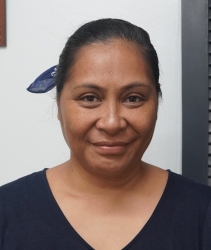The 2019 Annual Statistical Report shows that there are 150+ schools, 1245 teachers and 25,543 students in all our Adventist schools in the Trans Pacific Union Mission. These figures are strong evidence of the growing support given by the church, home, and the wider community when compared to the previous quinquennium report. Today, these same schools are facing the challenge of maintaining their distinctiveness due to government regulation and expectations.
Here are highly impacted areas:
- Teacher’s Recruitment – The average rate of recruitment of non-Adventist teachers in the last four years is 16%, as shown in Figure 1. A classic example is Fiji. In 2018, 44% of employed teachers were non-Adventists, as shown in Figure 2. This is mainly due to government support toward teacher’s salary. The question is, how long can we tolerate such a situation?
Figure 1
Figure 2
This impact has caused Fiji Mission in 2019 to privatize Navesau Adventist High School, and Vatuvonu Adventist High School is awaiting the judges’ decision. Dr Rasi (2008) states, “no Adventist teachers – no Adventist Education.”
- Bible Teaching – All too often it is the Bible lesson that is sacrificed, particularly in the secondary setting when the school program is interrupted. For example, for most secondary schools, Bible classes have been reduced to three subjects per week while core subjects are five or six classes a week. Therefore, we need to reposition Bible as one of the core subjects. For countries such as Solomon and Vanuatu, Bible is an examinable subject for Year 10 and 11, thus teachers tend to put more emphasis on teaching government provided curriculum. Also, the allocation of subjects and teachers is not being considered. Special thought needs to be given to who will be teaching Bible. Considerations need to be made concerning teacher competence and passion, not just the need to fill a teaching load. Teachers are the key links between God and students.
- Understanding Integration of faith and learning – Some of the common questions given by mostly secondary teachers when conducting integration of faith and learning in-service are:
- Is it worth all the extra effort, as I am a busy teacher?
- I am a Christian teacher modelling my faith. Isn’t that enough?
- What is the big deal when all schools, SDA and non-SDA, are teaching from the same curriculum?
- If I use a Bible text and have a prayer each lesson isn’t that integration of faith and learning?
To ensure that our Adventist philosophy and principles of faith and learning are integrated into the life of each of our students, the integration of faith and learning is strongly encouraged to be practiced by teachers among all our schools. Unfortunately, it is a challenge this day in age!
To conclude, the Apostle Paul in Romans 12:2 tells us to stop living like everyone else. Specifically, he writes that we must be changed in how we think; to have our minds renewed so that we can begin to understand God’s will for our schools. The question we should ask ourselves is: what does God want from our schools in such a time as this?

